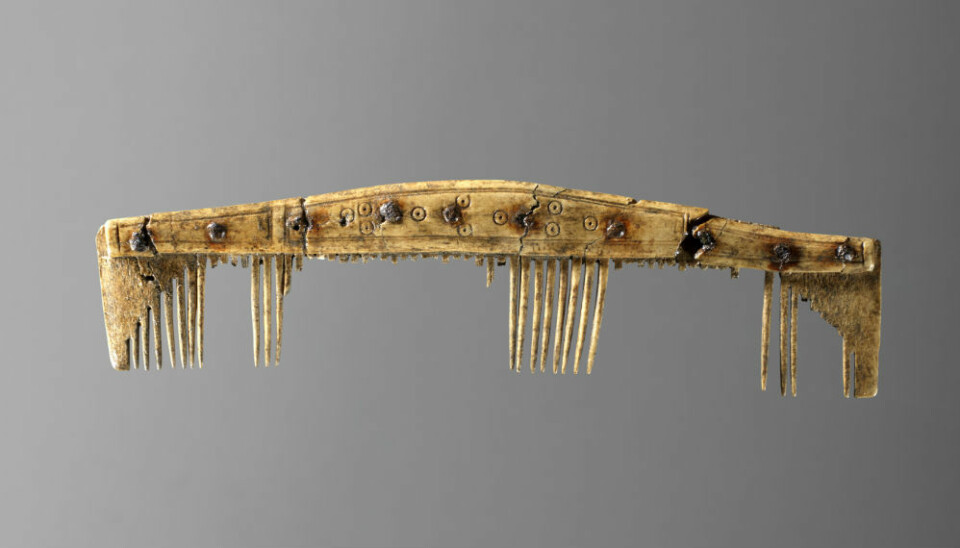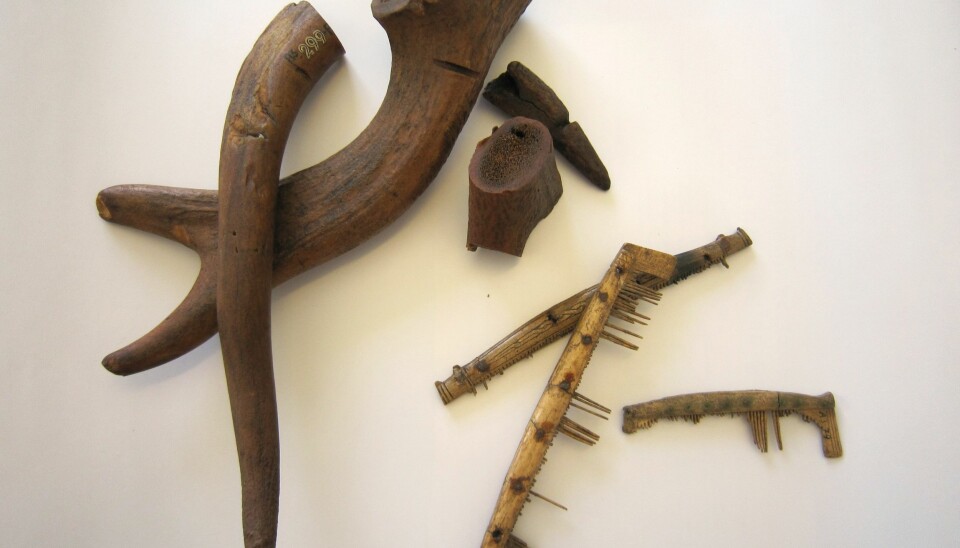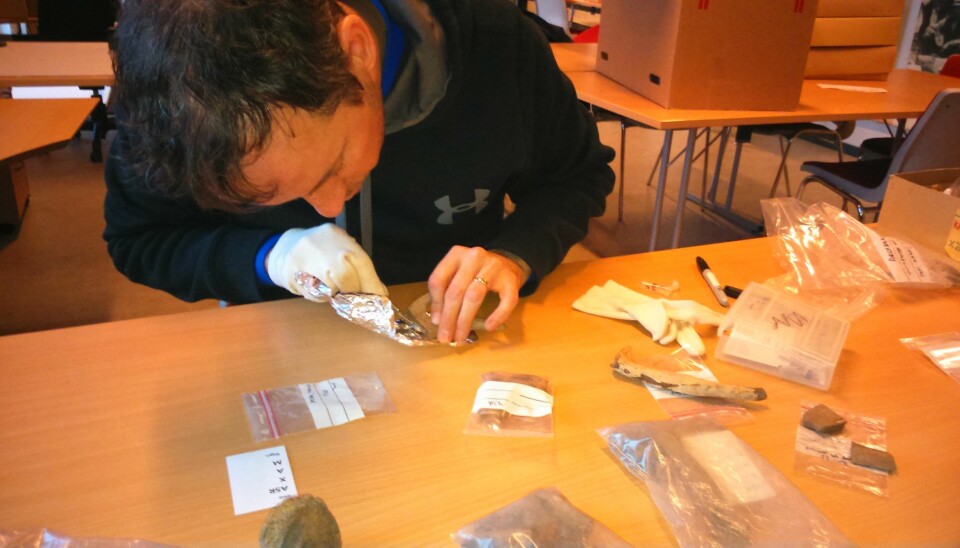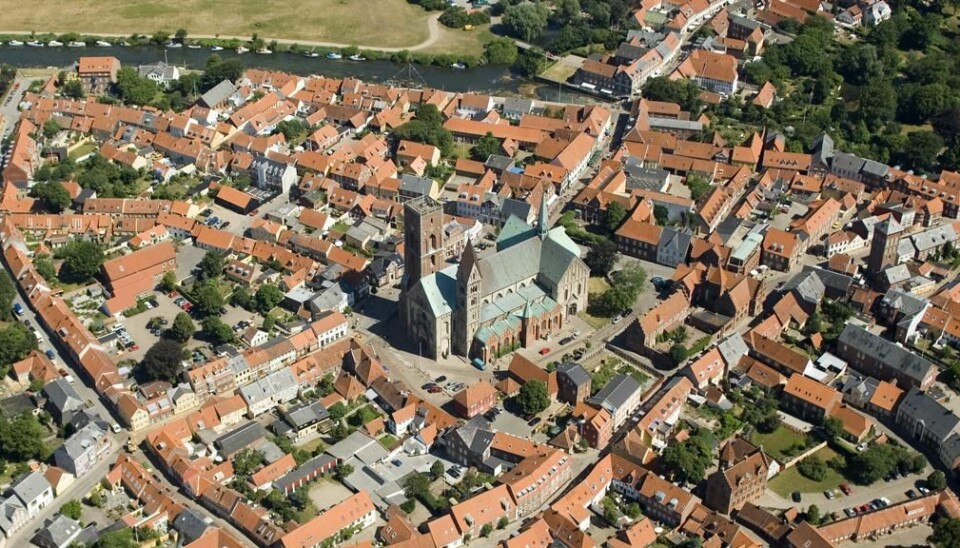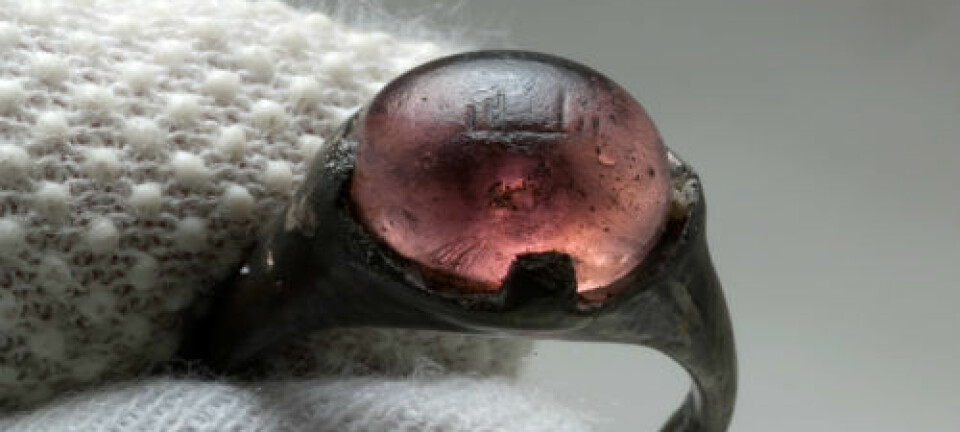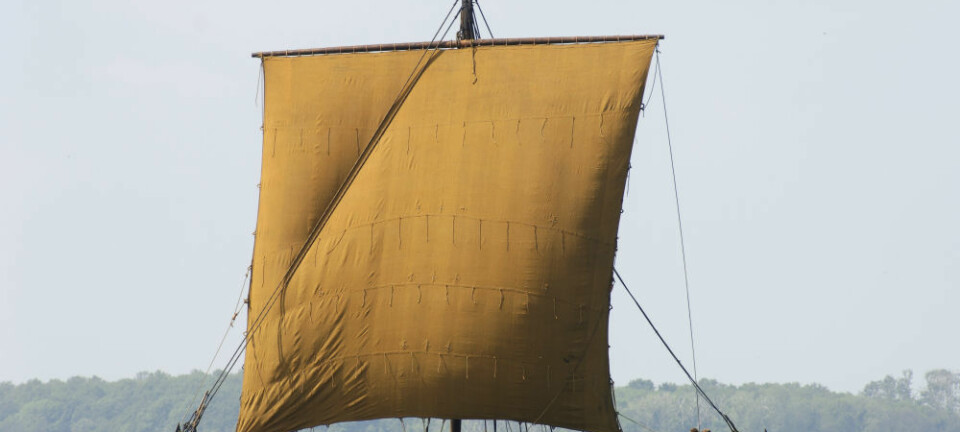The Viking age began in Denmark
New study changes our understanding of how and where the Viking age began.
The story of the Vikings begins in the year 793 AD, after Norwegian Vikings landed in England on the first official Viking raid. To this day, these fierce raids are the most famous of Viking stories.
Now, a new study suggests a more peaceful start to Viking seafaring -- and it all began in Denmark.
Three archaeologists from the University of Aarhus (Denmark) and the University of York (UK) have shown that maritime voyages from Norway to Ribe, the oldest commercial centre in Denmark, occurred long before the Viking age officially began.
The study shows that early Vikings travelled to Ribe in South Denmark as early as 725 AD.
We can see for the first time why they started to invest in ships and develop the technology. It is interesting that when we have two such significant developments and changes – urbanisation and raids across open water - that we can now say that they were, in fact connected.
The researchers discovered deer antlers in the oldest archaeological deposits of Ribe’s old marketplace and they turned out to be the remains of Norwegian reindeer.
"This is the first time we have proof that seafaring culture, which was the basis for the Viking era, has a history in Ribe. It's fascinating," says Professor Søren Sindbæk, one of the authors of the new study, which has just been published in the European Journal of Archaeology.
Norwegian professor Dagfinn Skre from the Museum of Cultural History in Oslo speaks positively about the research.
"I was happy when I read it for it's something that archaeologists have believed for many years -- but now it has been demonstrated," says Skre. "It's absolutely wonderful and it's a tremendously persuasive study."
Archaeologists divided into two camps
The question of whether Ribe was central to the early Viking culture, had divided archaeologists into two camps. A connection between the biggest Nordic commercial centre of the day and the beginning of the Viking voyages seemed obvious, but there was no evidence to confirm it.
The reindeer antlers are the first archaeological evidence that Ribe really did play a central role. Commercial trips between Norway and Denmark allowed them to develop the maritime skills and geographical knowledge needed for future raids.
"It is a nice example of archaeology providing solid data that goes directly to the heart of major debates. It’s one thing to have a qualified idea of how something should be, it's another to show it," says archaeologist Morten Søvsø, curator for Museums of Southwest Jutland in Denmark. He was not involved in the new study, but thinks that it fits with current research.
Vikings developed their maritime expertise sailing between Denmark and Norway
Seafaring was central to the Vikings and their long sea voyages were unique for their day. The unsuspecting English had no idea of what was about to hit them, when the first Vikings set off from Western Norway in 793 AD to strike the Lindisfarne monastery in northern England.
"The Viking Age becomes a phenomenon in Western Europe because the Vikings learned to use maritime mobility to their advantage. They learned to master sailing to such an extent that they get to the coast of England where the locals don't expect anything. They come quickly, plunder the unprepared victims, and leave again -- a sort of hit and run," says Sindbæk.
The Vikings did not become adept mariners overnight. According to Sindbæk it took a lot of time, effort, and resources before the first Norwegian sailors had enough knowledge and technology to make these long and dangerous voyages.
"We can see for the first time why they started to invest in ships and develop the technology. It's interesting that when we have two such significant developments and changes -– urbanisation and raids across open water -- we can then say that they were in fact connected."
What came first, the raiders or the merchants?
The new results show that long voyages were underway early in the 8th century AD, with the establishment of a marketplace in Ribe. What was to become history's famous Viking expeditions can be directly linked to the development of Ribe as a town and commercial centre.
"We can now show that the famous Scandinavian sea voyages, which eventually led to the discovery of Iceland and Greenland, have a history of some commercial travel, not just raids. Previously we were inclined to say that yes, once you can sail across open water, you can also sail to the commercial towns -- now we can turn the equation around and say that trading towns may have been an important part of the drive behind developing new technologies, "says Sindbæk.
"The peaceful exchanges -- trading -- will take up more of the story, and the military voyages, which are also important, must now share the space," he says.
The 'missing link' between Viking raids and urbanisation
These new findings do not just tell us when the Viking age began. Discovery of this early trade also tells us something about the development of Ribe, the earliest Viking town in Scandinavia.
Deer antlers were popular in comb manufacturing, one of the earliest known industries, and were often used to produce needles and other tools. It was not difficult to obtain enough antler material for a typical household, but it could be difficult for a professional comb maker to find sufficient quantities locally.
The new study shows that the early Vikings from Norway exploited the readily available commodity, and could easily have sold reindeer in large quantities to Denmark.
"Someone up in Norway knew that they must make an expedition and assemble a large number of these antlers, which for them was a waste product, and go to Ribe where they could sell them. They know that there is a purpose to the journey, and that it can be done safely without being robbed or the market suddenly closing," says Sindbæk. “In this way, one can say that the activities in the high mountains are a part of urban development."
According to Søren Sindbæk, Ribe is generally perceived as the centre of the southern Jutland region and at the forefront of development within Scandinavia - simply trading within the region. Although Sindbæk does not believe this himself.
"There are some, including me, who have suggested that contrary to this view, distant contacts travelled from far away to meet in Ribe. However, we have not previously seen evidence of these links to the rest of Scandinavia, which is strong evidence against this interpretation. If you cannot see the evidence for such links then it is hard to explain what Viking raids from Norway have to do with the rise of towns in Denmark. This study gives us the missing link," says Sindbæk.
Vikings did not know they were Vikings
Not everyone agrees that the study clearly shows how Viking towns improve our understanding of when the Viking era began.
In a study from 2008, the archaeologist James Barrett concluded that urbanisation and trade were not a decisive marker, and he is still not convinced that the development of towns such as Ribe actually helped to kick start the Viking age.
"It's solid research, and the results are really exciting. Soren and his colleagues argue that a town is in fact a network, and there are many things, such as merchants from Norway, that make the town possible. Where we do not necessarily agree entirely, is in the perception of whether towns and trade also helped to start the Viking age," says Barrett, who specialises in medieval archaeology at Cambridge University, UK.
Barrett admits that the role of towns would be central to the initiation of the Viking age if you look at the it from the perspective of a trading society, rather than focusing on military matters such as raids.
Sindbæk agrees.
"Now we can prove that shipping between Norway and the market town of Ribe was established prior to the Viking era, and trade networks helped to create the incentives and the knowledge of the sea, which made the Viking raids possible. It is the first time that we can clearly link two very important phenomena, the lock and key if you like, of the Viking Age," he says.
Ultimately, the researchers agree that the discussion of when the Viking era began is also one of semantics. It all depends on what you mean by Vikings. Morten Søvsø from Southwest Jutland Museums suggests that we should be careful with the labels with give to people who lived in the past.
"They didn’t go around knowing they were Vikings. If you want to argue that the Viking age in fact started when they had contact with the wider world, then this study supports this view - but it will always be a rationalisation," says Søvsø.
--------------
Read the original article in Danish on Videnskab.dk
Translated by: Catherine Jex
Scientific links
- 'Urban Networks and Arctic Outlands: Craft Specialists and Reindeer Antler in Viking Towns', Journal of European Archaeology (2015), DOI 10.1179/1461957115Y.0000000003
- 'What caused the Viking Age?' Antiquity (2008), DOI: 10.1017/S0003598X00097301
- "Ribe Studier, Udgravninger på nordsidenaf Ribe Å 1984-2000", Jysk Arkæologisk Selskab, Den Antikvariske Samling (2006) (Scroll down for the English version)
External links
- Søren Sindbæk, Aarhus University
- James Barrett, University of Cambridge
- Dagfinn Skre, University of Oslo
- Morten Søvsø, Museums of Southwest Jutland
- Claus Feveile, Danish Agency for Culture
